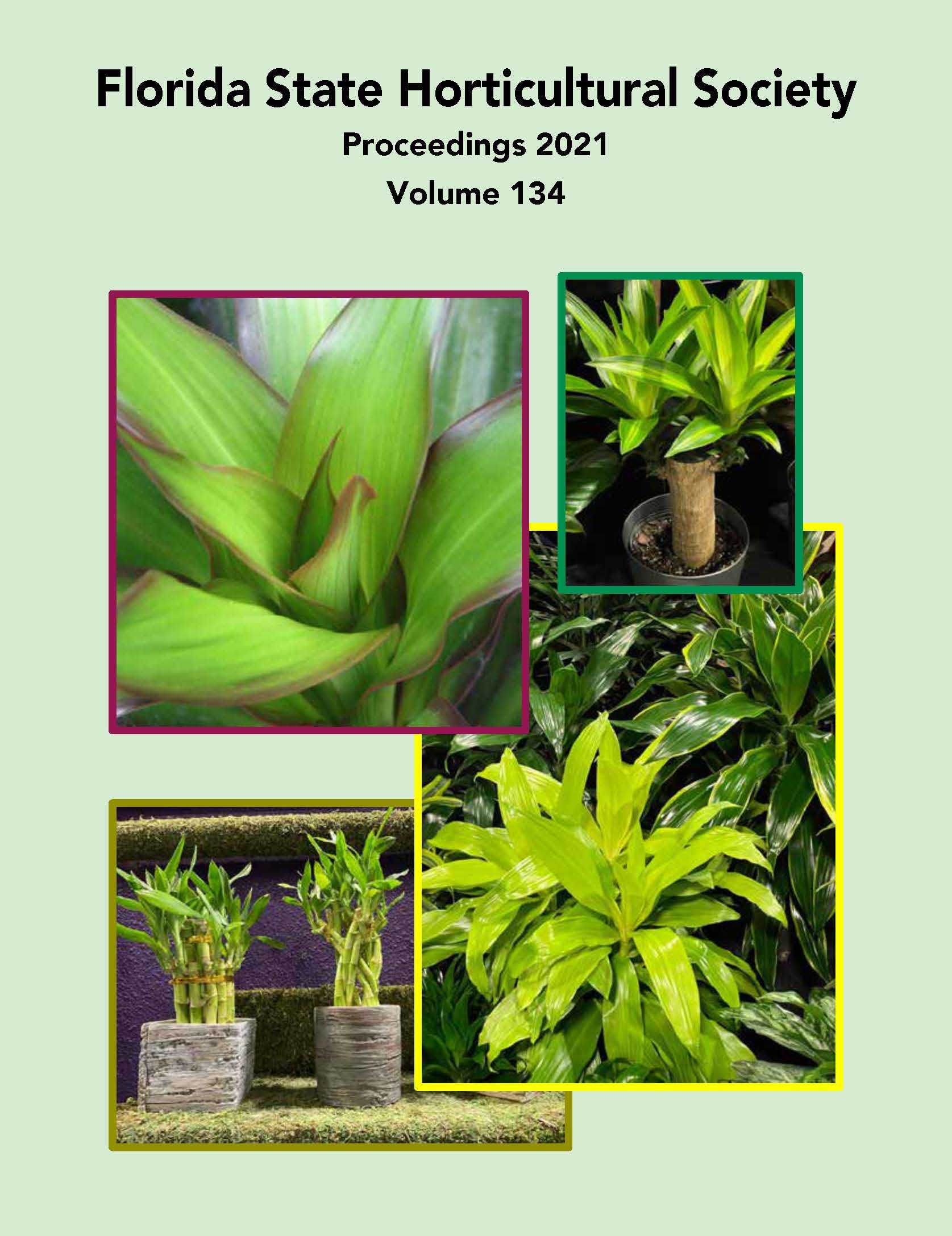Abstract
Caladiums (Caladium spp.) are perennial ornamental plants in the family Araceae grown primarily for their colorful foliage. A substantial proportion of the tuber production of this species occurs in Lake Placid, Florida, on muck soils. Weed management can significantly reduce tuber yields and hinder harvest operations. There are limited herbicide options and as a result growers rely on hand labor for weed control. To address the lack of information on safe herbicides for caladium production, greenhouse trials were conducted at the Gulf Coast Research and Education Center, Balm, Florida, to evaluate tolerance of three caladium varieties (‘Red Flash’, ‘White Christmas’, and ‘Rose Bud’) to different preemergence herbicides. Aminopyralid, triclopyr, and aminocyclopyrachlor did not damage caladium at low rates if applied prior to emergence. There is significant risk of damage if the products are applied after emergence. Flumioxazin did not damage any of the caladium varieties when applied at 12–24 oz/acre. Dimethenamid-P was safe at application rates below 21 oz/acre. Flumioxazin and dimethenamid-P both appear to be viable weed management options for caladium growers with minimal crop damage risk.

